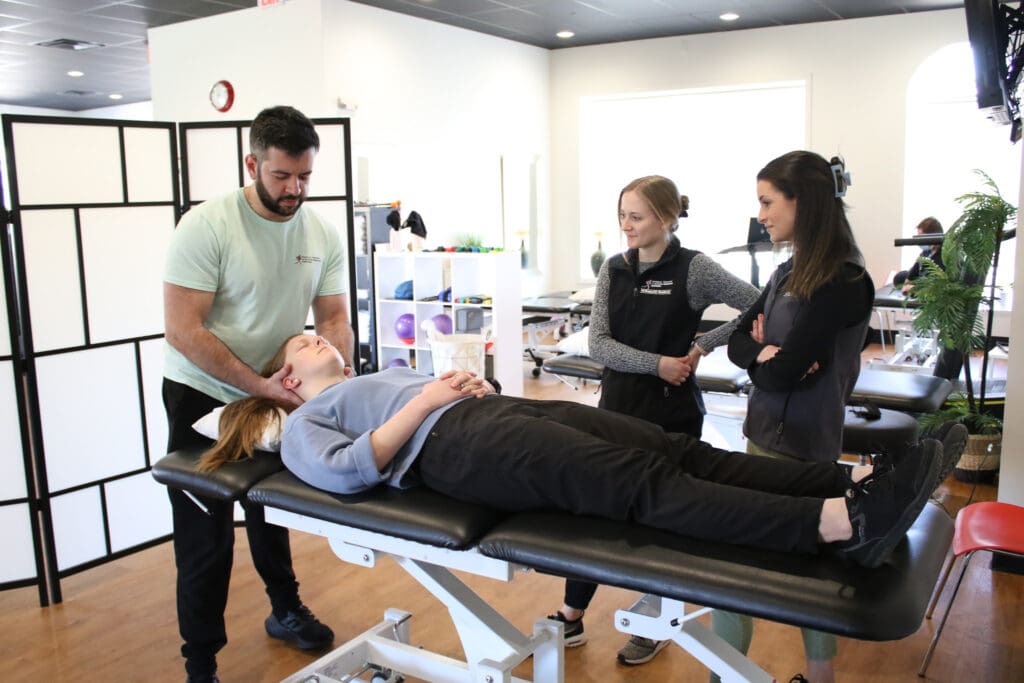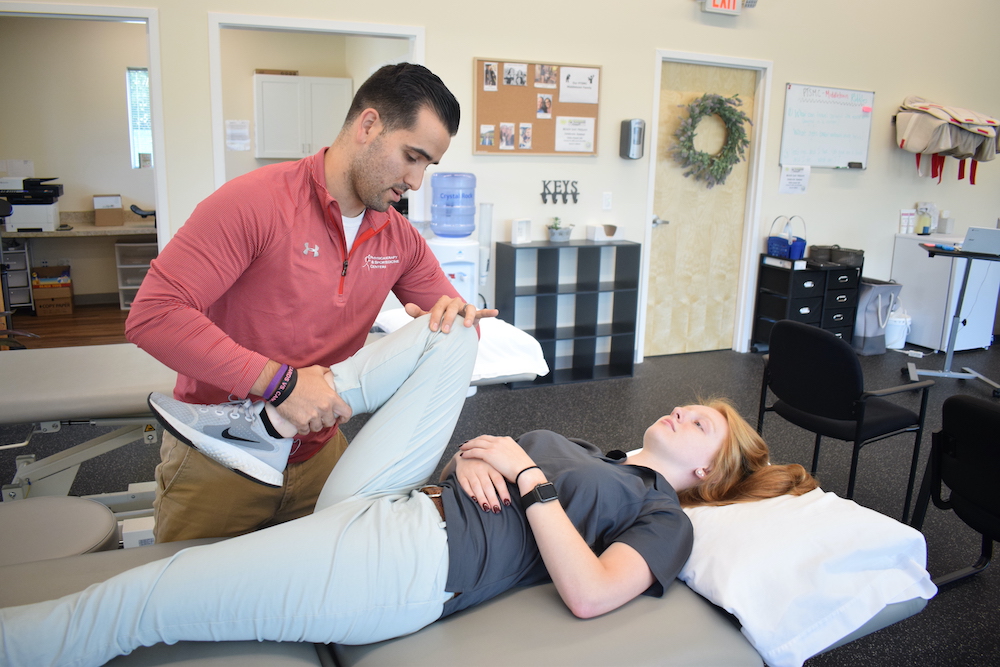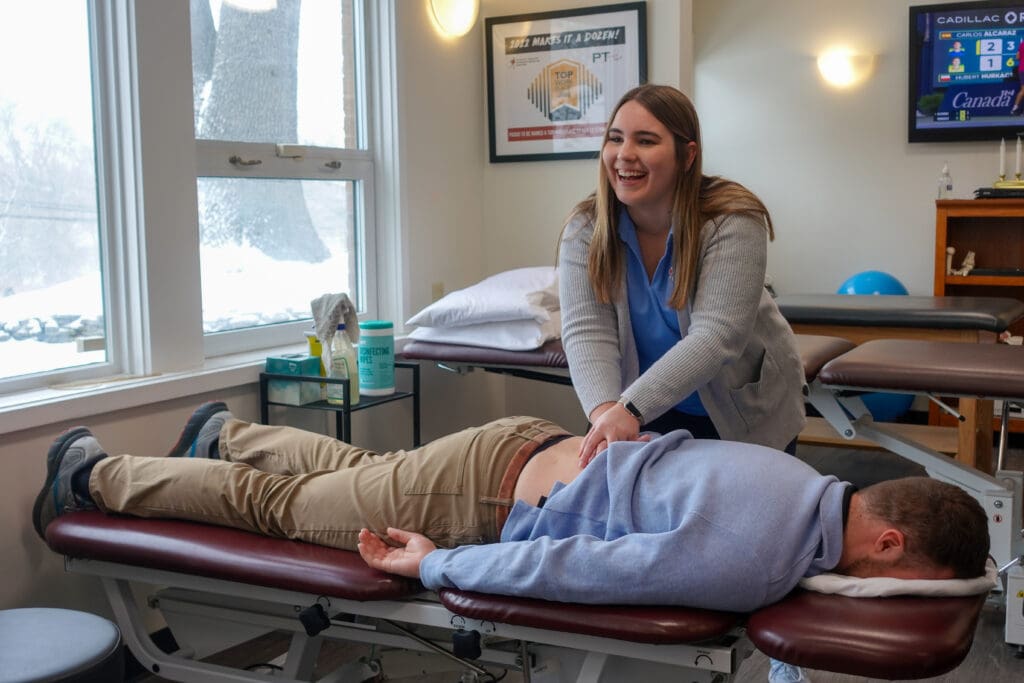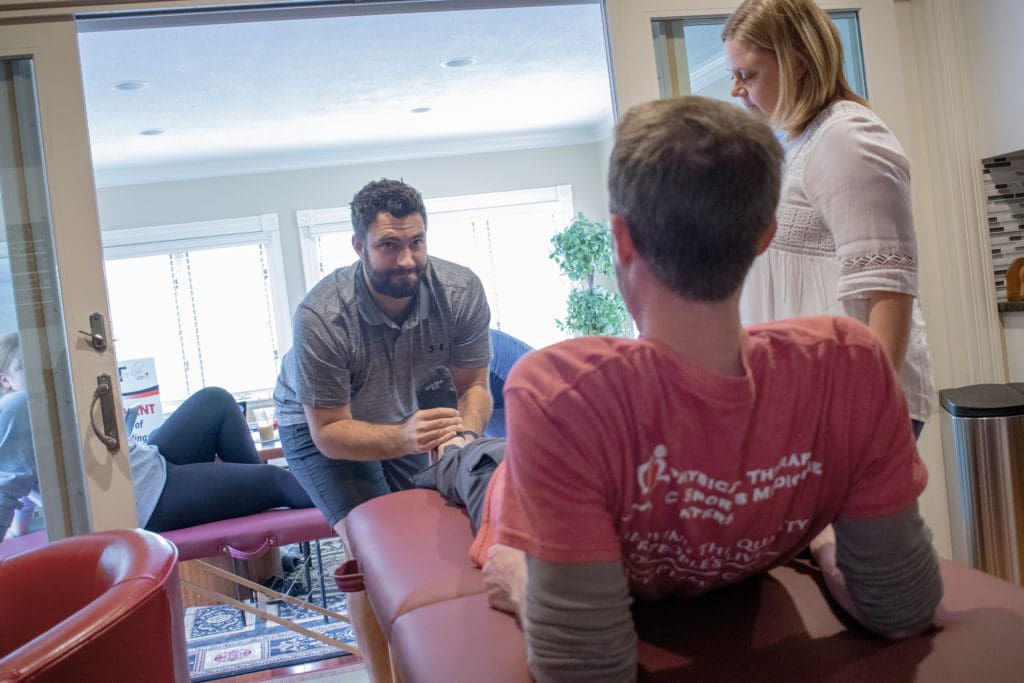Why Physical Therapy is a Great Career

If you’re looking for a job where you help people feel and move better, have high job security, and experience job satisfaction – physical therapy might be for you!
Physical therapy is an amazing career path, especially if you’re interested in sports medicine, exercise, or anatomy. Many physical therapists decided to become PTs after experiencing an injury and going through physical therapy themselves, but if you don’t have that experience, you might not know how wonderful physical therapy is!
First, what is a physical therapist and what do they do?
 According to the American Physical Therapy Association, “physical therapists are movement experts who improve quality of life through prescribed exercise, hands-on care, and patient education.”
According to the American Physical Therapy Association, “physical therapists are movement experts who improve quality of life through prescribed exercise, hands-on care, and patient education.”
When you think of physical therapy, you might think of post-operative rehab or any type of injury recovery, but physical therapists do so much more than that! They treat all kinds of patients who are having any limitations or pain as well as help people prevent pain and injury from occurring.
Physical therapists can work in a variety of settings, including hospitals, outpatient clinics, sports and fitness facilities, people’s homes, nursing homes, and more.
Why Physical Therapy is a Great Career
There’s a reason US News ranked physical therapy as #6 on their list of 100 Best Jobs. Actually, there’s a bunch of reasons.
- Job Security – There is a huge demand for physical therapists, and it’s only expected to grow. The job outlook from 2021-2031 is expected to grow 17% according to the US Bureau of Labor Statistics.
- Job Satisfaction – Physical therapists experience a higher rate of job satisfaction, as they get to directly help others feel better. It’s extremely satisfying to help someone accomplish something – whether it’s a daily task like picking up their children or running their first marathon.
- Competitive Pay – Pay varies based on factors like location, work environment, experience, and specialization. There are opportunities to increase pay by earning a specialty.
There are a few cons to physical therapy that it wouldn’t be fair to exclude. As with any job in healthcare, it can be costly to afford the necessary schooling, work can be demanding at times, and dealing with insurance carriers can be difficult. However, the high rate of job satisfaction for PTs seems to outweigh these factors.
How to Become a Physical Therapist

So, you want to start a career in physical therapy – great!
To become a physical therapist, you must earn a Doctor of Physical Therapy degree from a CAPTE accredited program and pass a state licensure exam. The typical length of the program is three years following an undergraduate degree. Some programs offer a 3+3 curricular format, where a student will take three years of undergraduate/pre-PT courses and then a three-year professional DPT program.
As a student, you will have the opportunity for clinical rotations, where you’ll be able to work in a physical therapy setting alongside licensed physical therapists to gain real-world experience.
After graduation, you will have to pass your licensure exam. You can take the exam a maximum of six times in your lifetime to receive a passing score. After graduation and accepting your first job, you may choose to pursue a residency or fellowship program to enhance your knowledge.
After you’ve begun your career, you can pursue any specialties you’re interested in. One great part about physical therapy is that you can choose to pursue a specific setting or population. Do you want to work with athletes? How about focusing on women’s health? Do you want to work with stroke patients? You can decide which patients you love to work with and specialize in that area!
The American Board of Physical Therapy Specialties recognizes ten areas of specialty:
- Orthopaedic Clinical Specialist (OCS)
- Geriatric Clinical Specialist (GCS)
- Sports Clinical Specialist (SCS)
- Cardiovascular & Pulmonary Clinical Specialist (CCS)
- Electrophysiology Clinical Specialist (ECS)
- Neurology Clinical Specialist (NCS)
- Pediatric Clinical Specialist (PCS)
- Oncology Specialist
- Women’s Health Specialist (WCS)
- Wound Management Specialist
In addition to these specialties, you’ll have the option to take courses instructed by clinical experts on a variety of topics. Some recent courses offered to PTSMC clinicians include dry needling, concussion treatment, temporomandibular joint dysfunction treatment, and more.
Physical Therapist Assistant Career
 Physical therapist assistants (PTAs) work alongside physical therapists and are a part of the clinical team. They have limitations as to what and who they can treat, but overall, physical therapist asssitants’ jobs are similar to physical therapists’ jobs. The demand for PTAs is expected to grow 24% from 2021-2031. PTAs must complete an associate’s degree from a program accredited by the CAPTA and pass a licensing exam. The median salary is lower, as PTAs require less schooling.
Physical therapist assistants (PTAs) work alongside physical therapists and are a part of the clinical team. They have limitations as to what and who they can treat, but overall, physical therapist asssitants’ jobs are similar to physical therapists’ jobs. The demand for PTAs is expected to grow 24% from 2021-2031. PTAs must complete an associate’s degree from a program accredited by the CAPTA and pass a licensing exam. The median salary is lower, as PTAs require less schooling.
Are Physical Therapists and Occupational Therapists the Same?
Nope! Both PTs and OTs have the same goal – to improve the quality of your life. The way they approach it is different, but they often work together. Physical therapists work on improving strength, range of motion, and movement while decreasing pain and limitations. Occupational therapists help improve a patient’s motor skills needed to perform daily tasks, like brushing your teeth.
The Bottom Line
The first step is to decide if you want to work in physical therapy. We recommend getting some real-world experience, which might mean working as a PT Aide or at the front desk of a clinic. If you’re interested in pursuing a physical therapy career and want some guidance, feel free to reach out to us. We love helping prospective students!
